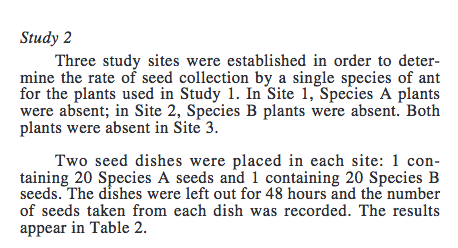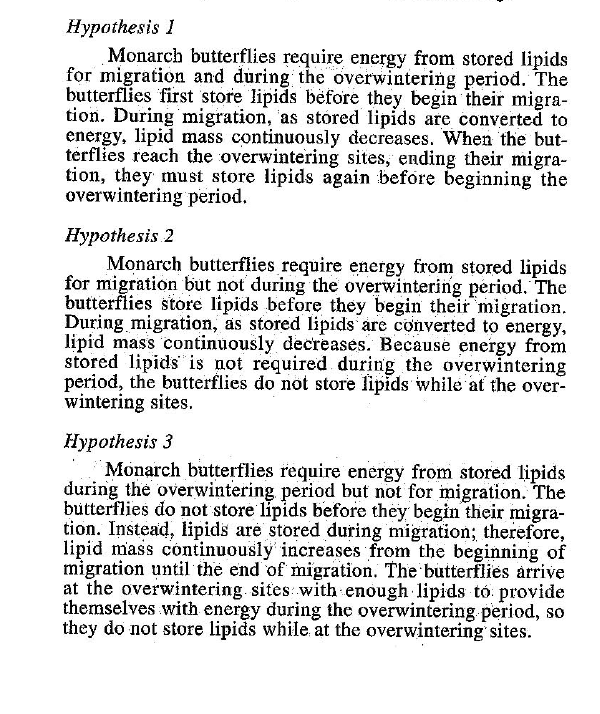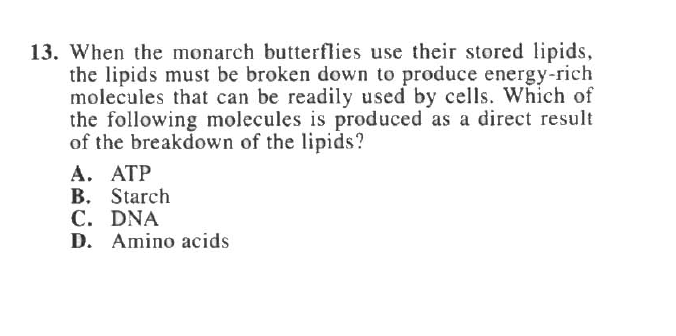ACT Science Prep: Big-Picture Strategies for Defeating the ACT Science Section
If you were to ask around, a good portion of students who’ve experienced the ACT will tell you that their least favorite part of the test was the science section. There can be a few reasons for this. For one, this section always shows up LAST. You've just spent three hours going through English, math, and reading, and your brain is probably exhausted already, and now you expect it to successfully interpret complex scientific data? Secondly, the science section is not really what you’d expect from a “science” section based on high school science course curriculum. The ACT science section is basically data interpretation and analysis – there is hardly any outside information that is required to do well on this section, which makes it both harder and easier to prepare for. Like the reading section, everything you need is there on the pages in front of you somewhere. It’s just a matter of finding it, understanding it, and applying it. For this reason, students who do not know what to expect from the science section may be startled when they try to work through the studies, and students who have little experience with data interpretation may become frustrated. But don’t fear – the ACT science section is one that anyone can master with increased practice and familiarity of the types of studies that show up and the types of questions asked. ACT science prep focuses on increasing familiarity with the format and wording of the studies, frequent practice of the types of questions asked, and, as always, identifying tips, tricks, and strategies that work for an individual student to help with combatting the time constraint of the ACT science section.
The science time constraint is pretty intense: 40 questions in 35 minutes (it’s the same time constraint as the ACT reading section). That means you have more questions than you have minutes. The science section is composed of 6 separate studies, each with approximately 5-6 questions associated with it. If you already have a solid grasp of how to analyze and interpret data and can consistently work through the science section studies and answer most questions correctly, then it’s probably time to assess whether your testing pace on this section is appropriate for the intense time constraint.
We encourage students to use trial-and-error to identify strategies and tricks that will help them on test day and eliminate those that do not produce results. Check out some of our recommended big-picture strategies that you can try below. Keep track of which ones help you 1) increase your pace and thus lower the overall time it takes you to complete a study, and 2) increase the number of questions that you answer correctly within studies and thus increase your overall section score. The goal is to identify strategies that will speed up your pace AND increase your overall score simultaneously. Make note of which strategies work, and make sure to use these consistently as you continue to prep leading up to test day.
Big-picture strategies that can help anyone increase their ACT science score:
1. Change the order of the studies
There are six studies that show up in the science section. The topics can vary from biology and chemistry to genetics, physics, animal science, and more. There’s really no way of knowing what kind of subjects will show up in the science studies you’re dealt, but it also doesn’t really matter. Regardless of the topics of the studies, the overall format, language, and types of questions will remain pretty consistent across tests.
There are three types of studies that you’ll be given the task of analyzing:
1. Data Representation
Data representation studies are all about your ability to understand data presented to you within charts, tables, and graphs. That’s it! These studies DO NOT test you on your knowledge level of the topic of the study; instead, they are only testing your ability to understand what the study data means. You’ll recognize these studies as those that are heavy with bar graphs, scatterplots, and tables. Here is an example:
This study consists of two line graphs and a brief study description. Throughout the questions, you are charged with the task of extracting different data pieces from the two graphs. Although the topic is greenhouse gases, not a single question asks about information found outside the data in the graphs. Success on these studies depends on your attention to detail and ability to analyze the many aspects of the datasets.
2. Research Summaries
Research summary studies will usually present several related studies or steps within one study to you within the same passage. You’ll often see sections labeled Study 1, Study 2, Study 3, and then the questions will ask you to interpret the design of the studies and the results of the experiment. Here is an example:
Again, you are not required to be an expert on the topic of the study. Here, the study topic is ants and seed germination, but you DO NOT have to possess any background knowledge in these areas to do well on this study. You do, however, have to have some knowledge of the scientific method. In order to answer this question correctly, you’ll need to know what a controlled variable is and how to detect it. A controlled variable is a variable that remains constant, so all you need to do for this question is go back to the study and determine which variable remained unchanged during the study. The study says "Two seed dishes were placed in each site,” which should lead you to option G: the number of seed dishes remained constant. This is a good example of the limited amount of outside information required to do well on the ACT science section, and all outside information required will be similar to this. Anything the ACT will expect you to already know for the science section will be very broad across science as a whole: scientific method, determining object density, basic understanding of p.H. levels, etc.
3. Conflicting Viewpoints
Conflicting viewpoints studies will look a bit different than the other types of studies. Only ONE conflicting viewpoint study will show up on each ACT exam. This section will be primarily word-based and may not have any charts, tables, or graphs associated with it. This section will give you theories of different students, teachers, scientists, or something similar, and then the questions will require you to compare and contrast these theories. Here is an example:
The questions for this study ask you to determine which hypotheses match up with various ideas about the migration and lipid storage tendencies of monarch butterflies. Doing well on this section will require you to be able to read through the scientific theories and compare and contrast them from one another.
Now that you have an idea of what type of studies show up on the science section, it’s time to consider how you can use this to your advantage to identify strategies to help you reach your best possible score. One common big-picture strategy that many students will leverage is to change the order in which you complete the studies.
There’s no rule that says you have to go through the studies in the order that they’re presented to you – you can rearrange the order in any way that you want. This is where consistent practice is important because it can uncover patterns in your ability to do well on different types of studies. If you’re consistently doing better on the research summaries than on the data representation studies, you might consider attempting the research summaries FIRST. (Remember that the key is to order things from Easy to Hard whenever possible – this ensures that you are working through the things that are easier for you earlier on when your anxiety levels are lower, and you are working through the more difficult pieces as your anxiety level goes up.)
Many students will not find much of a difference in their ability to combat research summaries and data representation studies, as both of these types are data-driven. However, MANY students will notice a difference when it comes to the conflicting viewpoints study (the one that’s word-based). Remember that there is only one conflicting viewpoints study that shows up on the exam. It is a lot of words, and, therefore, can take a lot more time than the studies that focus on understanding data. For students who excel at analyzing data, the conflicting viewpoints study is oftentimes best suited to be pushed to the end of the science section simply because it slows the student down. That way, if the student does not have time to attempt all questions, they’ve probably at least answered more questions than if they had completed the conflicting viewpoints study in the middle of the section. On the contrary, students who struggle with data analysis and/or those who find interpreting data confusing and intimidating can leverage the conflicting viewpoints study in a different way – they can elect to BEGIN with this section. Students who find data analysis challenging will likely have an easier time with the word-based conflicting viewpoints study. By starting with this study, they are, therefore, putting the studies in order of easy to hard for them, which is important, and this will help to build their confidence early on, giving them a boost of energy that they can use to attack the rest of the studies.
The Key Takeaway: Watch for patterns as you complete practice science sections, and try reordering the section types so you are working through them from easiest to hardest for you. Pay attention to how this affects your overall pace while completing the section and ability to consistently answer questions correctly.
2. Change the order of the questions
Similar to changing the order of the studies, there’s also no rule that says you have to answer the questions in the order you’re presented to you either. If possible, it can be beneficial to put the individual questions of the study in order of easiest to hardest as well.
One way that the science section is actually really kind to testers is by frequently telling you where to look to find the correct answers. Many questions will say something like “According to Study 2, …” thus telling you EXACTLY where you need to look in order to find the answer to the question. You can use this to your advantage by answering any questions that ask about the same part of a study consecutively. This keeps your brain from jumping back and forth all around the study. By answering any questions that ask about Study 2 back-to-back, you’ll remain focused on this one part of the study and be able to work through the questions more quickly and waste less time since you don’t have to transition back to this section of the study later.
Secondly, skip over anything that seems particularly difficult or like it’s going to take longer to work through. Work through the easier, faster questions in the study first. By doing this, you’ll ensure that you aren’t wasting time going through the study, AND you’ll continue to learn about the study as you work through the easier questions, giving you more information and understanding to apply to the harder questions when you attempt those at the end.
The Key Takeaway: Answer questions that ask about the same part of a study consecutively. For example, answer any questions that tell you to refer to “Table 1” back-to-back. This keeps you focused on one part of the study and keeps you from having to come back and refresh yourself on this part of the study later. Also make sure to skip over anything that seems difficult and come back to it after you’ve answered the other study questions. Both of these tactics can be big time-savers.
3. Wait to fill in your answer bubbles
Here’s one that you can use across all sections of the ACT. It may not cross your mind to wait and fill in your answer bubbles in bulk, or perhaps you don’t see the point in doing this. This can actually be a pretty effective strategy for some students. The fact of the matter is that the tasks you’re having your brain complete when you’re working through questions on the ACT are completely different than the task of filling in bubbles on your bubble sheet. What does this mean? Well, it means that if you take five seconds to fill in a bubble after every single question, you’re having your brain switch back and forth between tasks CONSTANTLY. This may not seem like it will have much of an effect on something like your ACT test score, but it’s possible that if you hold off on filling in your bubble sheet, your brain will gain momentum while you work through the questions on the test. For this reason, we encourage students to give this strategy a try. For the science section, circle the letter of your answers in the test booklet and wait to fill in the bubble sheet until you’ve completed a full study. By doing this, you won’t be interrupting your brain with a different type of task in the middle of working through a study, and you can instead take one break between each study (which you’ll have to do anyway as you transition from one study to another).
The Key Takeaway: Consider filling in bubbles only once you’ve completed a full science study. This way you’ll be filling all 5-6 bubbles at once for the given study, and you’ll be keeping your brain from having to switch back and forth between two very different tasks: filling in answer bubbles and thinking through scientific data.
4. Skip the last question in each section
Another thing to note about the order of questions in the science studies is that the questions that show up toward the end will generally be more difficult. The last question or two of each study will generally be significantly more complex than the other questions. Oftentimes, the last questions will be very broad, requiring you to apply what you’ve learned from the study to an outside source; other times this question will require a small amount of outside knowledge in order to answer it correctly. Here is the last question in the study about monarch butterflies:
The correct answer is A. In order to confidently answer this question, you have to know that ATP provides energy for living cells. Without this knowledge, you’ll simply have to guess on this question (hopefully after you’ve used process of elimination to potentially rule out some of the other options as incorrect).
Because questions like these tend to show up at the end of the science section, you can use this knowledge to your advantage. Some students will be faster to skip over these questions if they are unfamiliar with the topic or what the question is asking. Other students may decide to skip the last question of each study altogether, opting to focus their time elsewhere. After all, it’s possible that you may not have time to attempt all of the questions on the science section, so eliminating these ending questions may help you to speed up your pace and give you more time to attempt the earlier questions in each study, which tend to be easier anyway.
The Key Takeaway: There are always easier questions and harder questions on each section of the ACT. For science, the harder questions generally come at the end of each study. If you struggle to have time to complete the science section or you consistently answer the last questions of the studies incorrectly, consider skipping these altogether. After all, this only makes up 6 questions of the section and could give you the time to answer more questions elsewhere.
5. SLOW DOWN
This is another one that can help across all sections of the ACT, not just the science section. In fact, this is kind of like the Golden Secret of ACT success. It seems so counterintuitive to tell students to slow down and take their time working through questions when they’re taking a timed exam, but, for most students, slowing down can actually increase their test scores. By slowing down, you’re letting yourself work through questions more in-depth, double-check your answers and your reasoning, and understand the question in full before jumping to a conclusion.
The science section in particular can be very overwhelming. We’ve already talked about how you don’t have to be a subject matter expert to do well on this section of the test, but you certainly do still have to read large words, keep track of bizarre species names, and read REALLY LONG questions. If you’re rushing through the science section, you’re bound to miss important details within the questions and the study. Additionally, you’re not likely to think through your answer very carefully if you’re trying to hurry. Both of these things will lead to incorrect answer choices. Remember that every single question on the ACT is worth the same amount of points. If you answer all 40 questions but you rush through the whole section, you’re probably going to end up missing more questions than you would have if you’d let yourself slow down and only attempted 30 questions. Think about that for a second: The secret is in picking and choosing your battles – you don’t have to attempt every single question to get a good ACT score (unless you’re trying to score 32+, in which case you probably should make sure you have identified a strategy that allows you to answer all questions in each section thoroughly).
The Key Takeaway: Most students shouldn’t worry about having time to attempt all 40 questions. Instead, focus on taking your time understanding as many questions as possible and answering them thoroughly. You’ll always answer more questions correctly when you give yourself the time to think through them compared to hurrying through the entire section. The goal is to answer questions correctly, not to just answer questions.
There you have it: big-picture ACT science strategies to help you reach your goal score.
The ACT science section can be pretty intimidating, especially if you don’t know what to expect. Most students are not used to analyzing data sets and experiments, but with practice and increased familiarity, this is a section that anyone can do well on.





